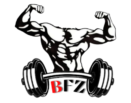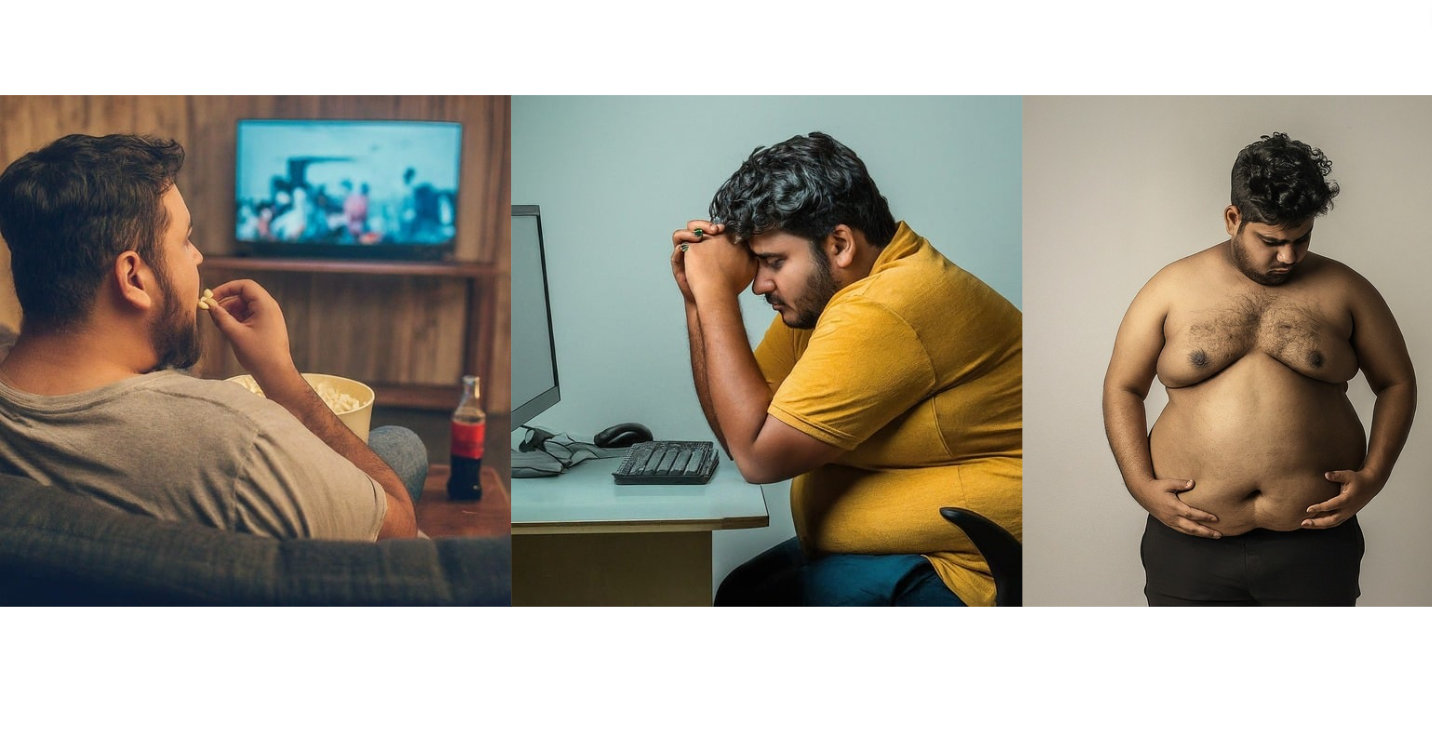Have you tried hundreds of diet plans, but they didn’t work? You’re not alone; there are millions of people who have suffered from this. The reason is that they have definitely made some mistakes.

Body fat is the biggest obstacle that prevents our muscles from growing and hampers our journey to reach our fitness goal. Diet is not the only element in losing fat, but its impact is the biggest. Did you know that over 80% of how much you gain or lose depends on diet?
In this article, you will learn exactly how you can lose fat. You will be surprised at how easy the process is. You don’t need to stop taking carbs or starve yourself.”
How to Lose Fat
You just need two things to get the fastest visible results.
1. Diet
There is a common misconception that we fully rely on exercise. We think that if we sweat more on the treadmill, we will get slimmer soon. But the reality is totally different.
Your body is like a bank account. If you deposit $100 and withdraw $100, your balance will remain the same. Your body reacts in the same way. There is something called calories, which we get from food. Your body has a specific calorie requirement. How many calories you need depends on your BMI, regular activity, muscle-to-fat ratio, metabolism, etc. If you take in more calories than you burn regularly, it accumulates in your body as fat to be used as a future energy source.
Suppose your regular calorie requirement is 2000. If you want to lose weight, you have to consume at least 300-400 fewer calories than 2000. This is called a calorie deficit. Then, your body will use your fat to fulfill its regular energy requirement, and you will actually start losing fat.
2. Weight Training and Cardio
Exercise like cardio and weight training is the best way to burn more calories. Our body burns more when we move more. Sometimes, our life schedule becomes so busy that we don’t have time to move and we end up sitting in a chair all day.
Besides diet, if you can dedicate just 1 hour a day, you will see the magic. With the help of cardio, you can burn 6-10 calories per minute, and with HIIT training, 10-15 calories per minute. That means you can burn around 300-450 calories in just 30 minutes. With weight training, you burn more than 400-500 calories. When you combine them, you can burn around 1000 calories per day.
Plus, cardio boosts your metabolism and enhances your gut health. When you build muscle through weight training, it will burn calories to maintain your muscle even when you’re doing nothing. This is called the resting metabolic rate.
How Long Does It Take to Lose Fat?
The fat loss journey is a long process. Your fat didn’t accumulate in one day, and that’s why you won’t see results overnight. Your fat is the result of consuming unhealthy foods over many years.
To be honest, it takes at least 6-12 months to lose fat, reveal muscles, and achieve a lean body. Depending on your condition, this time may vary. You might be genetically predisposed to lose fat faster, so you could achieve results in just 3 months.
You may lose fat quickly with a crash diet, but in the future, it will come with many health risks. In the fat loss journey, one thing you must have is patience. After starting, you will see rapid results, but this usually happens due to water loss. After that, the process slows down. That’s when you’ll see noticeable, lasting results.
Diet Plan
In general, a man needs 2500 calories a day, and a woman needs 2000 calories. Cutting down to 500-750 calories is the safest range that experts suggest. However, we must also take care of our nutrients.
Time | Meal | Foods | Macronutrient Breakdown |
7:30 AM | Water | 500 ml after waking up | Total: 0 kcal, 0g carbs, 0g protein, 0g fat. |
8:00 AM | Breakfast | 2 slices wheat bread/ 2 egg white omelets + Low-fat milk | Total: ~250 calories, ~42g carbs ~16g protein ~1.5g fat. |
8:30 AM | Water | 500ml 30 minutes after breakfast | Total: 0 kcal, 0g carbs, 0g protein, 0g fat. |
11:00 AM | Snacks | An apple /kiwi/ orange + 2 banana | Total: ~280 calories, ~70g Carbs, ~3g protein ~1g Fat |
11:30 AM | Water | 500ml 30 minutes after snacks | Total: 0 kcal, 0g carbs, 0g protein, 0g fat. |
2:00 PM | Lunch | 1 cup of rice + 1 plate mixed salad + 250 gm meat | Total: Approximately 500 kcal, 55g carbs, 36g protein, 10g fat |
2:30 PM | Water | 500ml 30 minutes after lunch | Total: 0 kcal, 0g carbs, 0g protein, 0g fat.
|
5:00 PM | Snacks | 25-30gm nuts/ + 1 cup coffee | Total: Approximately 180-205 kcal, 5-7g carbs, 10-14g protein, 15-20g fat |
5:30 PM | Water | 500ml after snacks | Total: 0 kcal, 0g carbs, 0g protein, 0g fat. |
8:00 PM | Dinner | 2-3 slices of bread/ 1 bowl of any healthy green vegetable (been, carrot, spinach, cabbage or any vegies) + 1 plate mixed salad + 150gm Tofu + 100gm plain yogurt
| Total: Approximately 530 kcal, 61g carbs, 39g protein, 15g fat
|
8:30 PM | Water | Drink 500ml after 30 minutes of dinner | Total: 0 kcal, 0g carbs, 0g protein, 0g fat.
|
This plan provides around 1750 calories, combined with complete micronutrients and a variety of fruits, veggies, and meat. This chart is suitable for both men and women, but women can cut some extra calories and follow a 1500-calorie plan by adjusting minor changes.
In this diet plan, we adjust the meal timing and allow space for digestion.
Macronutrients:
- 104-108g of protein
- 200-208 g of carbs
- 42-46 g of fats
Here, fruits and vegetables provide proper vitamins, minerals, and antioxidants.
This is a general and standard diet chart. You can adjust the nutrients according to your needs.
Stay Hydrated to Burn Fat

During fat loss, you may feel hungry, but you’re actually just thirsty. When you drink water, you will feel the difference. If you look at the chart, it emphasizes drinking plenty of water.
You should drink around 3-4 liters of water during your fat loss journey. Do you know why? It’s because your body requires extra water to support the process of breaking down fat. Drinking plenty of water increases your metabolism by 24-30%. When your body is metabolically more active, it burns more fat.
Not only that, but water also suppresses your appetite. Drinking water before meals will help you feel full with less food, preventing overeating. Plus, it balances your electrolytes, which are lost during workouts as sweat.
During fat loss, we often consume a lot of fiber-rich foods, which can lead to constipation if not paired with adequate water intake. Additionally, many toxins accumulate during fat loss, and these cannot be washed out without water.
So, drinking plenty of water is mandatory during fat loss.
Measure Yourself
Fat loss takes time, and there is a high chance that people might get demotivated and give up quickly. Tracking helps you stay motivated; it gives a clear measure of how you are progressing. Now the question is, how to measure? There are several different ways:
- Measure Weight on a Digital Scale
Measure your weight in the morning on an empty stomach once a week, not every day, to avoid fluctuations. - Use Body Measurements
Measure your chest, waist, arms, and legs with a measuring tape. This will help you identify which body parts are losing more fat. However, remember that changes won’t be visible quickly, so take measurements at least every 15 days. - Body Fat Percentage
Use a digital skinfold caliper to measure your body fat percentage. Sometimes, you won’t see significant changes on the weight scale, but don’t get discouraged. There are two possibilities: either you’re not progressing at all, or you’re losing fat and gaining muscle at the same time. To resolve this confusion and track your progress accurately, measure your body fat percentage. - Progress Photos
Take a photo every week with the same pose, the same lighting, and wearing the same clothes. Progress photos provide a clear visual representation of your transformation.
The Bottom Line
Fat loss is a long journey, and it takes a lot of time. So, do you want all your valuable time to be wasted without seeing any results? If the answer is “NO,” then you must follow the steps properly. The most important of these is the diet, which we’ve already discussed. Now let’s review all the points:
- Learn the basics of how fat is actually lost.
- Losing fat takes time—don’t be impatient and stay consistent with your routine.
- The diet chart I provided is a standard chart with all the essential elements your body needs. Adjust it according to your requirements.
- Drink at least 3 liters of water a day.
- Track how much progress you’re making.






